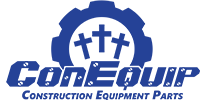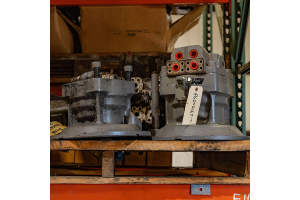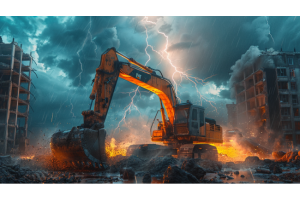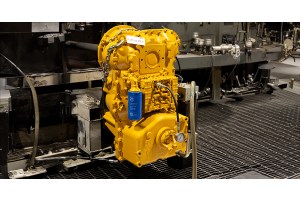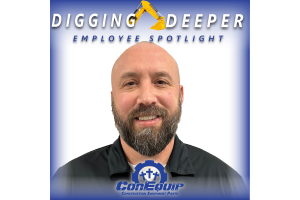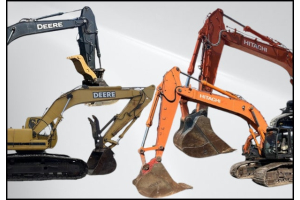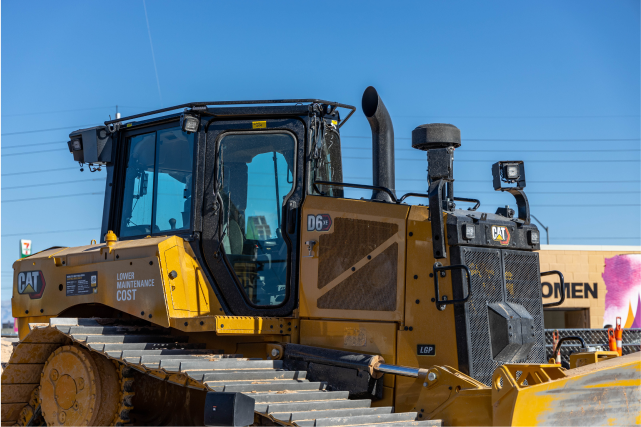
Smart managers are always thinking about the conditions of their dozers' undercarriages. It is said that half of a dozers' maintenance cost is related to the undercarraige. Most service requirements can be monitored by high tech sensors and tracked through telematics, undercarraiges don't really have that benefit. You have to monitor them with your eyes and hands.
Undercarriage Life and Wear
- A fair estimate of life on a dozer undercarriage is around 4,000 hours.
- It really depends on the dozer's application on which parts will wear out first.
- In some cases, sprocket segments will be the first to go.
- In harder rock conditions, track shoes will be the first thing on the list.
Bushing Turn and Wear Measurement
- The most accurate way to determine when a bushing turn may be needed is to measure the bushing and sprocket wear.
- Once the wear is measured, you should have a chat about bushing turn is required to get the maximum life out of the link and roller system.
Sprocket Replacement and Roller Rotation
- If you have the machine in the shop around 2,000 hours, it might make sense to replace any worn sprockets, so you don't have to make another trip to the shop soon after pick up.
- You can rotate the rollers on an undercarriage as you would tires on a car, because the front and rear rollers will get worn a little more quickly than the ones in the center.
- Carrier rollers could be another worn item around this time, but they can run until they completely fail and are not a costly repair.
Frame and Alignment Issues
Just like a car, if you have an alignment issue your dozer's undercarriage will wear more quickly. Whether it be an equalizer bar, pivot shaft, or even your roller frame, alignment is key. For example if your roller frame is out of alignment on one side, the tracks will follow that path and increase wear. Just like one person's mood can bring down a whole party, if one part fails, it can often cause others to follow suit.
On a six way bladed dozer, you can check the equalizer bar and pivot shafts in the field like this:
- Push the blade into the ground and lift the machine up a little bit.
- Tilt the machine to either side.
- Check the tightness in the equalizer bar and pivot shafts while the machine is lifted (any movement at all in the bar and shaft is bad).
Don't want to lift the machine up? Totally fine, there are signs you can see while the machine is on flat ground too.
- Check front idlers and carrier rollers to see if they are wearing abnormally.
- Check the sprockets on either side to see if one is wearing more quickly than the other.
Track Tension
Unmanaged track sag is the enemy of machine health! When track sag is inefficient for the type of soil you are working in, it causes the contact force to be much larger, and of course lead to accelerated wear. Keep your dozer clean, cleaning out debris and any packing between the frame and undercarriage is very important. Crud caught where it really shouldn't be will lead to unexpected wear. It can also hide leaks, zerks, and or faulty seals.
Wear Factors
In normal operations, the application of the blade and the under-machine conditions are the largest factors on the life of a dozers' undercarriage. While you may not have control on what type of dirt you're moving, soils with high quartz or moisture levels will degrade your undercarriage quicker than most. Quartz is very abraisive, and moisture in soil turns it into a sort of lapping compound.
How to Minimize Wear on the Site
- Minimize new experiences: new motions, forces, or environments.
- Shoot for short distances if possible. The longer push distances or higher the speeds, the speedier the wear.
- Avoid excess turning if possible.
- Try not to do lots of bench cutting operations or uneven loading.
- Keep the undercarriage clean. Excessive material in the undercarriage can lead to excessive wear and tear.
- Keep an eye on soil moisture content, moist soil is very abraisive.
Though sometimes unexpected, they don't always have to be. If your operations team does a thorough analysis of the jobsite and identifies these additional factors, the cost can be built into your bid models, as well as your owning and operating expendatures. With these tips in hand, you should be ready to start another awesome season of earthmoving and dirt digging!
Need a part for your dozer? Give us a call and get back to work!


